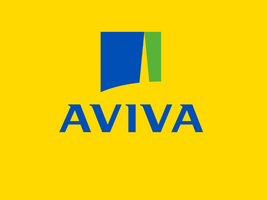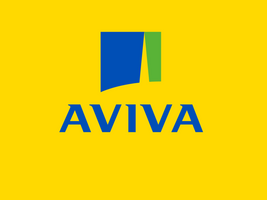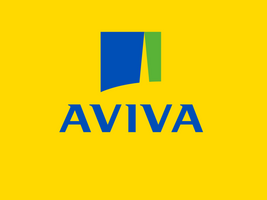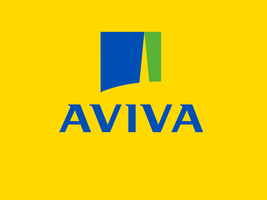Title Page
-
Conducted on
-
Prepared by
-
Location
-
To view our Loss Prevention Standard that supports this checklist, please view the following link : https://broker.aviva.co.uk/documents/view/aviva_measures_to_reinstate_plant_equipment_and_processes_lps.pdf
Measures to Reinstate Plant, Equipment and Processes
Planning
-
1. Have you prepared a scope of works with a supporting schedule to support your reinstatement plans?
-
2. Have identified critical works and those tasks which can be deferred until after reinstatement?
-
3. Have you notified the appropriate stakeholders of your plans to reinstate your process/plant/premises?
-
4. Have you prepared a staffing plan to complete the reinstatement works?
-
5. Have you identified whether specialist equipment and tooling is required to complete the works, including access equipment, PPE and other safety equipment?
-
6. Have you identified any additional facilities that maybe needed to permit reinstatement and resumption of operations?
-
7. Have you planned to review and update risk assessments, operating procedures and employee training packages?
-
8. Have you planned to review and update emergency procedures?
-
9. Have you planned to review and update your BCP to reflect the reinstatement and any changes made?
The Reinstatement of Works
-
10. Have reinstatement plans been made for individual items of plant/equipment or process lines?
-
11. Have recommendations from the equipment<br>manufacturer/installer been adhered to and requirements to maintain warranties or avoid installer penalty clauses?
-
12. Have you been able to ensure any software, programming or data input needed to safely operate the equipment has been uploaded into any control systems and is the most current and up to date safe version?
-
13. Have you inspected, tested and replaced any components removed during the shutdown procedure?
-
14. Have you refilled any tanks and reservoirs and where appropriate primed or purged lines where this is necessary for safe operation?
-
15. Have you conducted a visual inspection/check to ensure contamination, corrosion, seizure or blockage has not occurred during the period of shutdown?
-
16. Have you safely removed any isolations and lock outs of power or process lines/feeds?
-
17. Have you checked the integrity and condition of any machinery guarding?
-
18. Have you tested and verified the correct operation of any alarms, safety interlocks and emergency stops provided on the equipment?
-
19. Have you confirmed that any automatic fire detection systems or fixed fire protection systems remain active/operational?
-
20. Have you confirmed that any necessary maintenance and inspections (including statutory inspections) are up to date?
-
21. Have you checked that any battery backup power supplies to equipment are able to be fully recharged or whether these battery backup units require replacement?
-
22. Have you checked the condition of any pits and sumps, confirming their integrity and the absence of any debris or other unwanted contents?
-
23. Have you checked the condition and integrity of any access equipment used to access plant and process lines, ensuring it remains safe for use?
-
24. Have you checked that areas around all plant/equipment and installations are clear and free from debris/combustible materials or other unwanted items that may have accumulated during the shutdown period?
-
25. Have you updated engineering drawings and schematics to reflect the status and configuration of the plant?
-
26. Have you re-ordered any spares/consumables used from stocks held on site to enable the completion of reinstatement works?<br>Also have you sourced any newly required critical spare parts as a result of any changes made?
Additional Items for Specific Plant/Equipment
Ventilation Plant/System
-
27. Have you inspected and cleaned ventilation ducts?
-
28. Have you replaced/changed filters?
-
29. Where local exhaust ventilation is used to control exposure of employees to hazardous substances or to prevent hazardous atmospheres forming, have you confirmed the performance of this system?
Calibration of Safety Devices and Monitoring Equipment
-
30. Have you ensured all measurement devices remain in calibration including all safety devices such as those used for level measurement devices as well as gas, noise and vibration monitoring equipment?
Cooling Towers
-
31. Have cooling towers been cleaned by your competent water management contractor and the absence of legionella confirmed by testing?
Pressure Systems
-
32. Has the integrity of pressurised lines and equipment been checked and verified?
-
33. Are statutory inspections up to date?
-
34. Have any pressure relief mechanisms been checked for signs of corrosion or blockage that may impede operation?
Combustion Equipment (including boilers)
-
35. Has all equipment been serviced and maintained prior to being put back into use with the operation of any combustion safety controls and the integrity and adequacy of any flue/exhaust/chimney arrangements verified by your competent inspecting engineer?
Plant Handling Hazardous Substances and Flammable Liquids
-
36. Has the integrity of any plant/process lines handling hazardous substances/flammable liquids been verified?
-
37. Has the integrity and suitability of any electrical equipment in hazardous areas been verified?
-
38. Have earth bonding/grounding arrangements been checked with earth continuity and the absence of any isolated conductors within the installation confirmed?
Electrical Charging Equipment
-
39. Has electrical charging equipment been inspected by a competent engineer to verify its continued safety, with particular regard to damaged connectors, the operation of safety cut offs and other protection devices on the electrical circuits?
Work at Height Access Systems
-
40. Has a competent person inspected the condition of these systems with particular regard to the condition of anchorage points and any harnesses or fall arrest devices?
Lifts and Lifting Equipment
-
41. Have lifts and all lifting equipment and any lifting accessories been checked by a competent person prior to being put back into use?
-
42. Are statutory inspections up to date?
Emergency Generators
-
43. Have emergency generators been inspected and serviced by a competent engineer?
Vehicles and Trailers
-
44. Have all vehicles and trailers been serviced and maintained?
-
45. Are all statutory requirements complied with (e.g. MOT, Tax, Driver Training, etc.)?
Refrigeration Plant
-
46. Has a competent refrigeration engineer verified the continued safety and performance of refrigeration plant?
Electrical Installation
-
47. Has the electrical installation been inspected and tested as required under the Electricity at Work Regulations and IET Wiring Regulations and have all Cl & C2 faults been repaired?
-
48. Have you used thermal imaging tools to check for electrical hazards associated with electrical distribution boards and any electrical connections which may have become loosened during the shutdown?
-
49. Have you confirmed the correct operations of all electrical circuit breakers, RCDs and surge protection devices?
-
50. Have you checked and tested UPS to confirm correct switching and operation?
Gas Supplies
-
51. Have you exercised gas isolation valves and checked the operation of any interlocks to fire alarm systems or other safety devices on specific equipment or installations?
Reinstatement Following a Pandemic (additional considerations)
-
52. Have you been able to fully implement Government guidelines relating to social distancing and shielding/protection of vulnerable persons?
-
53. Have you established and communicated to employees' procedures and protocols they must follow should they feel ill at work or at home?
-
54. Have you made arrangements for the cleaning and sanitisation of the workplace in accordance with Government guidelines?
-
55. Have you prohibited unnecessary visitors to the workplace and established alternative arrangements such as video conferencing for stakeholders wishing to speak with employees and to view the premises and processes?
-
56. Have you checked that contractors working at your site are able to fully comply with social distancing and other infection control procedures?
-
57. Is there adequate provision of suitably designed facilities for hand washing and cleaning, with a sufficient number of appropriately sited hand washing facilities that are kept well stocked with soaps, hand cleaners, sanitisers and where appropriate moisturisers?
-
58. Have you identified and put in place procedures to minimise risks of spread of contamination/infection from any contaminated workwear?
-
59. Are you able to maintain supplies of appropriately specified PPE?
-
60. Have you implemented a system to ensure you manage any temporary relaxation of statutory obligations so that you remain legally compliant?
-
61. Have you assessed risks to employees who remain as homeworkers, with adequate risk controls demonstrably implemented?
-
62. Have you ensured employees know how to access services that provide support for mental health and wellbeing?
Completion
-
Additional Comments
-
Completed by: (Name and Signature)
-
Please Note:
This document contains general information and guidance only and may be superseded and/or subject to amendment without further notice. Aviva has no liability to any third parties arising our of ARMS' communications whatsoever (including Loss Prevention Standards), and nor shall any third party rely on them. Other than liability which cannot be excluded by law, Aviva shall not be liable to any person for any indirect, special, consequential or other losses or damages of whatsoever kind arising out of access to, or use of, or reliance on anything contained in ARMS' communications. The document may not cover every risk, exposure or hazard that may arise and Aviva recommends that you obtain specific advice relevant to the circumstances.

















